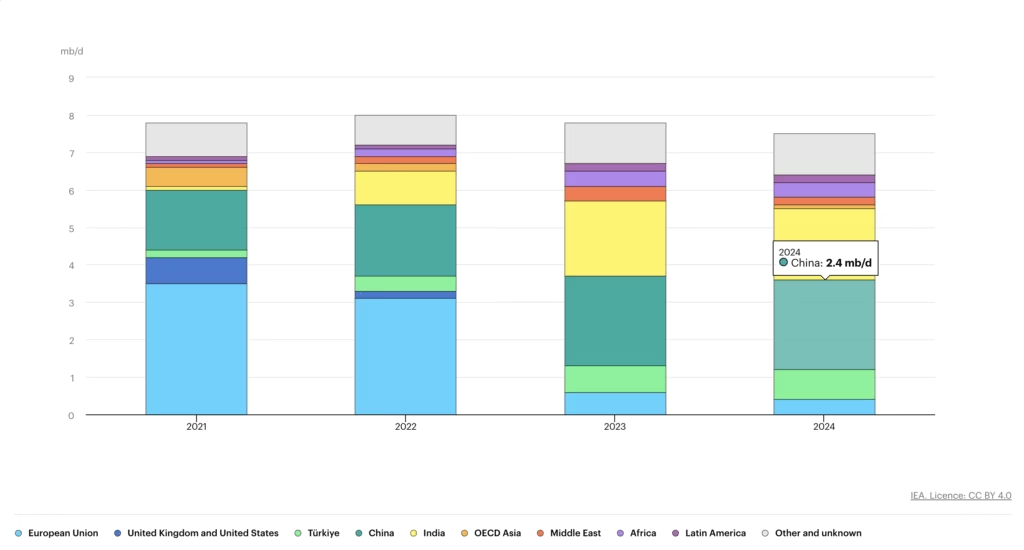August 6 – US President Donald Trump is imposing an additional 25% tariff on Indian goods because of the Indian government continually buying Russian oil. Buying Russian oil escalated tensions between…….

August 6 – US President Donald Trump is imposing an additional 25% tariff on Indian goods because of the Indian government continually buying Russian oil. Buying Russian oil escalated tensions between the world’s biggest GDP and the world’s fifth GDP. The new import tax will be applicable from 21 days after August 7. Now India has the highest import tariff imposed by the USA—50%.
You are thinking about what is import tariff?
Import tariffs are taxes imposed by a country’s government on goods or services brought in from another country. These taxes are collected when the services or goods enter a country and are typically calculated as a percentage of the product’s value.
Why do countries impose tariffs on other countries?
Countries impose tariffs for various strategic and economic reasons. One of the primary reasons is to protect the economy by making outside countries’ products expensive, thereby encouraging consumers to buy locally manufactured products. This is important for new industries to nurture and get some push by the government. Tariffs are also a form of revenue source for the country. Because of this reason, import tax collection increases significantly. Additionally, tariffs are used to retaliate against unfair trade practices, to apply pressure or diplomatic negotiations, or to give a signal of disapproval to the tariffed country’s actions—as now we are seeing that the US has imposed a 50% tariff on India because of geopolitical tensions between both countries.
How imposed tariff works?
We will take an example: if India is selling t-shirts to the US, previously before the tariff at $10, but now because of the US imposed tariff, consumers in the US pay $15 for the same t-shirt.
Trump’s executive order to impose tariffs did not mention China, which also imports Russian oil heavily, but later Trump said he could announce similar further tariffs on Chinese goods and services. “It may happen. I can’t tell you yet,” Trump told the reporters. “We did it with India. We’re doing it probably with a couple of others. One of them could be China.”

Experts say this is the biggest setback for US and India relations since Trump became President of the US in January. By raising tariffs, he is increasing the price of Indian goods in the US market, which is India’s biggest customer. In 2024 alone, India sold $87 billion worth of goods and services to America. These new tariffs hurt various industries in India such as clothing, shoes, and jewellery which are heavily dependent on US buyers.
This move by Trump is changing the friendly landscape between Narendra Modi and Donald Trump. Recently, Trump has made harsh comments on India, calling it a “dead economy,” saying its trade rules are “obnoxious,” and accusing India of making money from cheap Russian oil and funding the war between Ukraine and Russia.
India’s government called this decision “extremely unfortunate” and pointed out that many countries are buying goods or oil from Russia to protect their economies. The Government of India said, “We will take whatever steps needed to protect the interests of 1.4 billion people.” Prime Minister of India Narendra Modi is getting ready to visit China after seven years. India is rethinking its global partnerships as tensions with the US are increasing.
National Security Advisor Ajit Doval and External Affairs Minister of India S. Jaishankar are set to visit Russia to talk to top officials regarding the US tariff, economic, and energy ties.
RBI Governor Sanjay Malhotra, in the MPC meeting on August 6, 2025, said, “We firmly reject Trump’s remarks on India” and presented evidence-based arguments about India’s strong economic position. He continued, “India is doing very well. We are doing very well. India is one of the top contributors to world GDP growth. The narrative of a dead economy does not align with the facts. India is contributing 18% to global growth, while the US is contributing 11%. In fact, India’s 2026 GDP growth forecast is still at 6.5% compared with the world average of 3%.”
Trade tariff as a growth risk
Malhotra acknowledged that the US tariff will slow down India’s growth, exports might be affected, and investment could dip in the short term. However, India’s domestic demand and manufacturing sector remain key strengths.
Domestic drivers of growth
Steady credit growth: 14% YoY in Q1 FY26
India has robust public infrastructure investment
Rural and urban consumption demand is resilient
Expanding the economy with the help of UPI, Aadhaar, and GST
Experts’ view on tariff
Trade between India and the US is worth $190 billion. But because of Trump’s tariff, this will be affected hard. Exporters say the situation is serious. According to S.C. Ralhan, President of the Federation of Indian Export Organisations, more than half of India’s exports will be affected due to the tariff. Economist Madhavi Arora says this will kill trade between India and the US.
How can India tackle this situation
Senior Indian officials said, “We still have a window”. The tariff will be applicable 21 days later. There might be some room to talk and find a solution. For now, there are no plans to visit Washington or respond with retaliatory measures. Instead, the government is supporting exporters with low-interest loans and loan guarantees to absorb this shock.
Conclusion
We don’t know what will happen next. We have faith in both countries—they will take better decisions for India and America’s relationship.
